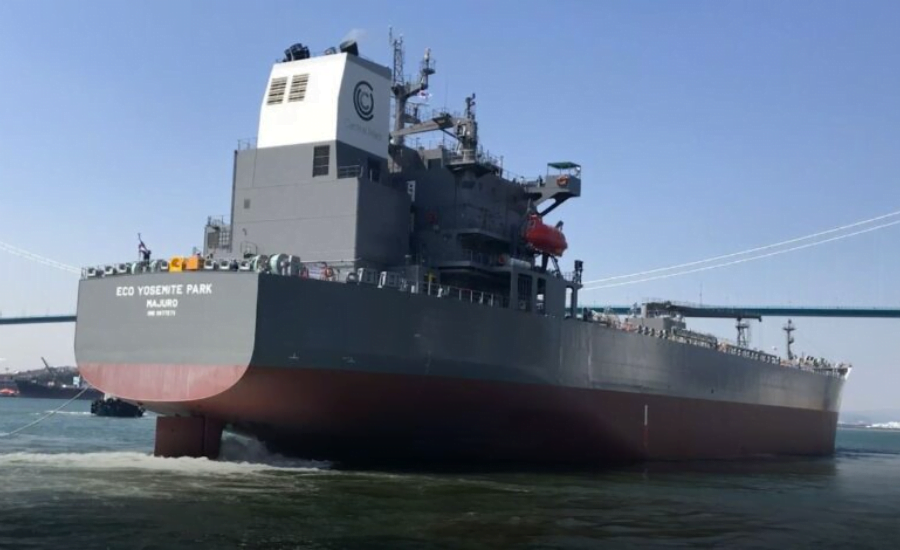
A natural harbors is a protected body of water that is partially or completely shielded from the open sea by natural structures such as bays, inlets, or headlands. Such harbors are ideal locations for large cities and offer the opportunity for ships to anchor there, as they have deep waters.
In the past and today, many natural harbors are used for military purposes in addition to commercial uses. They are therefore of strategic importance and play a key role in the development of maritime transport and trade. Many of the world’s largest and busiest ports are located in these natural harbors.
Geological processes such as erosion, sedimentation, and glacial activity make it unnecessary for these natural harbors to have breakwaters, resulting in calmer conditions within the harbor. Now that we know what a natural harbor is, let’s take a look at the ten largest natural harbors in the world.
Top 10 Largest Natural Harbors
Port Jackson/Sydney Harbour, Australia
Port Jackson, also known as an Sydney Harbour, is a harbor in the Tasman Sea, part of the South Pacific Ocean. It is considered the largest and deepest natural harbor in the world.
Port Jackson covers the waters of Sydney Harbour, Middle Harbour, North Harbour, Lane Cove, and the Parramatta River. It is 19 kilometer’s long and has an area of 55 square kilometers. This makes it one of the most beautiful natural harbors in the world and the most important port facility in the Australian state of New South Wales. Its minimum and maximum depths are 9 meters, with a depth of 155 feet at low tide.
The harbor’s irregular foreshore stretches for 240 miles, offering extensive mooring opportunities, and the main wharf is located close to Sydney’s central business district. The harbor’s entrance is 2.4 miles wide and lies between North and South Heads, where the country’s naval and military bases are located. The famous Sydney Opera House and Sydney Harbour Bridge are also found here.
Poole Harbour, United Kingdom
The second largest port in the world is said to be Poole Harbour in Dorset, southern England. It was a formed at the end of the last ice age and serves as the mouth of many rivers, the largest of which is the River Frome. A long history of settlement, dating back to pre-Roman times.
It is a shallow, with an average depth of an 48 cm and has a dredged main channel from the entrance to Halls Bay. The port covers an area of approximately 36 square kilometers and handles both passengers and cargo. The port serves domestic vessels, fishing vessels and cargo ships. It is a popular spot for recreational sailing and boating and has a marina.
Cork Harbour, Ireland
Cork is a natural harbor at the mouth of the River Lee in County Cork, Ireland. It has been an important port and center of defense for centuries. In the 20th century it was a traditional center of heavy industry, but has now been replaced by energy production, shipping, shipbuilding, refining and the pharmaceutical industry.
The port of Cork is 15 nautical miles from the Celtic Sea on the south coast of Ireland. It covers the areas of Cobh, Whitegate, and Ring skiddy. It is also close to shipping routes to Northern Europe. The port is well equipped and has excellent road and rail links to the rest of Ireland, allowing for fast distribution of cargo. Each year it handles approximately 2,260 vessels, 8,800,000 Tonnes of a cargo, 147,500 TEUs and 52 cruise ships carrying over an 100,000 passengers.
Port of Trincomalee, Sri Lanka
Trincomalee Harbour is one of the world’s largest natural harbors and is located on the northeast coast of Sri Lanka. Its strategic location in the middle of the Indian Ocean has shaped the history of the region. The Dutch, Portuguese, French, and British fought many battles for control of the port. In 1942, the Japanese Navy sank three British ships that were anchored in Trincomalee harbor.
The picturesque harbor is surrounded by highlands, and its entrance is framed by two headlands. It has an area of 1,630 hectares, and the entrance canal is 500 meters wide. It also has many underwater canyons, making it one of the most beautiful and best deep-water ports in the world. There are separate berths for cruise ships and very few berths for cargo ships, but the anchorage area can accommodate ships of all sizes.
Port of Mahón, Menorca
At 6 kilometers long, 1200 meters wide and 30 meters deep, the port of Mahón, Menorca is one of the longest and largest natural harbors in the world. It is considered the largest natural harbor in the Mediterranean. The town has many great places to explore and learn about Menorca’s history, including English architecture, villas, and defense structures. The port also hosts yachts and cruise ships. The port handles containers, bulk cargo, liquids, general cargo, and RoRo. The facility handles approximately 866,300 Tonnes of cargo and 800 ships per year.
Port of Halifax, Canada
Halifax is a natural harbor on the east coast of Nova Scotia with direct access from the Atlantic Ocean. It has an area of 10 square kilometers and 150 square kilometers of water. It is a deep, wide, ice-free facility with minimal tides. The port is closer to Europe and Southeast Asia than any other North American east coast port. It is also one of the few ports in the region that can receive, and process fully loaded post-Panamax container ships.
The port handles 1,500 ships each year, creating 15,000 jobs and $2 billion in an economic activity. It handles all types of cargo, from food products such as grains and fresh produce to machinery, automobiles, and containers. Approximately 12.3 million tons of cargo and more than 490,000 TEUs are handled here each year.
Falmouth and Carrick Roads, Cornwall, UK
Falmouth is located near the mouth of the River Fal on the southwest coast of England. It has facilities for bunkering, ship repairs, cargo handling, loading and transshipment, fish landing, and rig laying. Together with Carrick Roads, it is one of the largest and deepest natural harbors in Western Europe. It has also been the departure and arrival point for many cruises around the world, including Robin Knox Johnston and Dame Ellen MacArthur.
It is the largest marine bunkering facility in the UK and supplies all types of marine fuel. Furthermore, because of its location, operators can expect efficient turnaround times and reduced costs. The deep-water port provides a protected berth for ships waiting for orders and for ships storing supplies or undergoing crew changes.
It is one of the few ports in the UK that handles explosives. Other goods handled at the port include forest products, animal feed, grain, containers, coal, stone, scrap, and general cargo. Fishing in Falmouth is an old industry, and the port is close to some of the best fishing and shellfish in the UK.
Milford Haven, Wales, UK
Milford Haven lies between St. Anne’s Head and Sheep Island on the southwest coast of Wales. The Milford Haven Navigation is a natural harbor, the largest in Wales and the sixth largest in the UK. It is a closely protected deep-water port serving tankers, large ferries, cruise ships, pleasure craft, and fishing vessels. There are several wharves, a ferry terminal at Pembroke, and an enclosed wharf at Milford Docks.
A number of services are offered here, including cargo handling, fish handling, cruise calls, ferry operations, and a marina. There are also two LNG terminals here, South Hook and Mulco. Others include Dragon LPG, Valero, and Sem Logistics. The port handles around 48.8 million Tonnes of cargo per year and carries 325,000 passengers.
Grand Harbour, Malta
Grand Harbour, II-Port-il-Kbir in Maltese, lies beneath Malta’s capital, Valletta, and the three cities of Cospicua, Vittoriosa, and Senglea. The port includes the Port of Valletta, a natural deep-water harbor stretching 3.6 kilometers inland and protected by two arm breakwaters: the St. Elmo’s Point Breakwater in the north and the Ricasoli Breakwater in the south.
Located on Malta’s southeast coast, the port has a number of multi-purpose wharves to accommodate cruise ships and conventional cargo vessels. The port’s water depth varies between 5 and 15 meters. Annually, it handles approximately 1,800,000 Tonnes of general cargo, 502,000 Tonnes of dry bulk cargo, 1,000,000 Tonnes of liquid bulk an cargo, 820,000 Tonnes of containerized cargo, 420,000 cruise passengers, 200,000 ferry passengers, and over 4,000 vessels. The port has special grain and cement silos, oil facilities, and receiving facilities.
Otago Harbour, New Zealand
Otago is a natural harbor off the coast of Dunedin, New Zealand. It is a long, rugged stretch of navigable waters that separates the Otago Peninsula from the mainland. The harbor includes Port Chalmers along the harbor and Dunedin Quay at its end. Otago Harbour has served as a sheltered harbor and deep-water port for centuries.
It is an export facility for chilled, wool and frozen meat, timber, tallow, forest products, grains, seeds, wood chips, industrial products, dairy products, fruit, etc. It exports phosphates, fertilizers, petroleum, liquefied petroleum, gas, automobiles, timber, imported paper, pulp, chemicals, textiles, and fish. The port handles approximately 2.5 million Tonnes of cargo per year.










